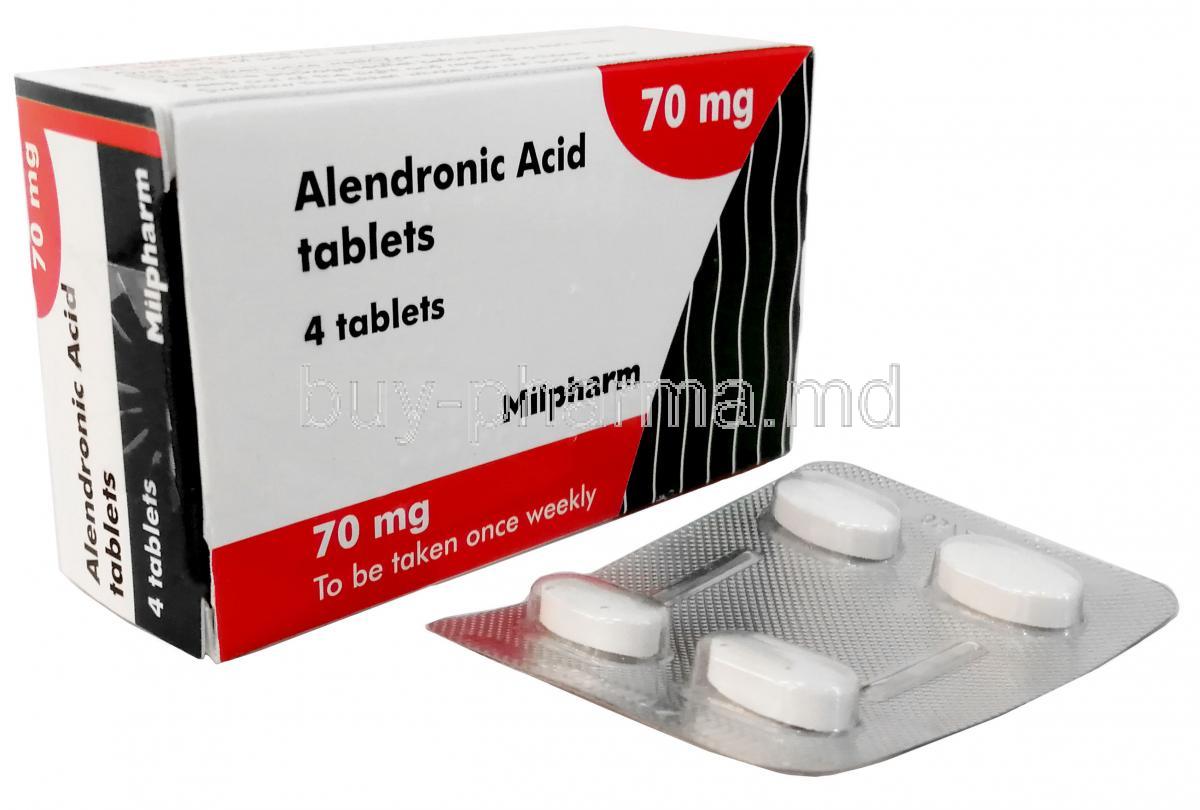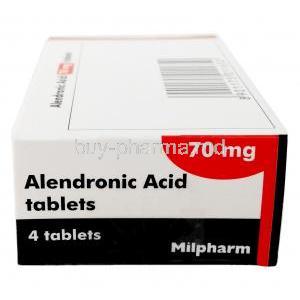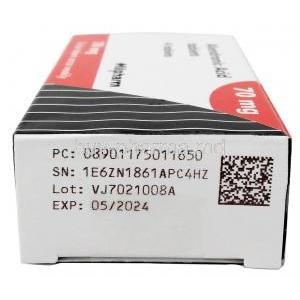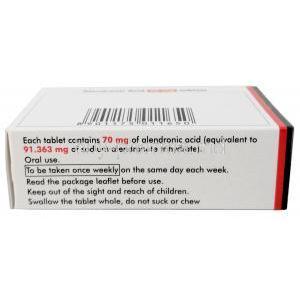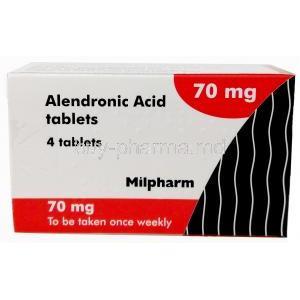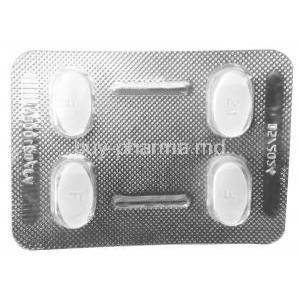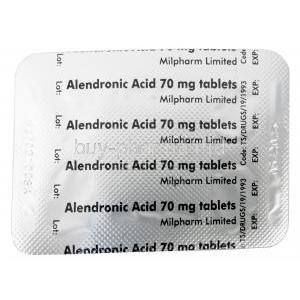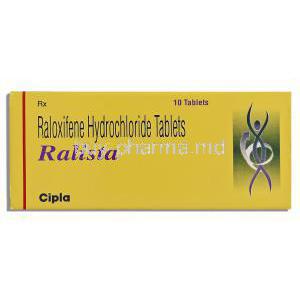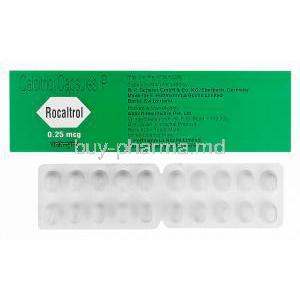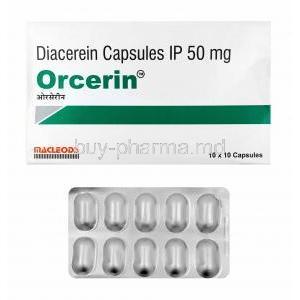Alendronic Acid
Introduction
Alendronic Acid plays a role in the medical treatment of bone-related conditions. First created in the 20th century, its discovery represented a major step forward in addressing disorders involving bone weakening. Its vital role in healthcare is highlighted by its effectiveness in slowing down the advancement of osteoporosis, a condition that puts millions around the world at a higher likelihood of suffering fractures.
Composition
Alendronic Acid is known for its bisphosphonate structure giving it a strong attraction to hydroxyapatite present in bones.
It comes in forms, like tablets and solutions allowing patients to choose based on their individual requirements and preferences.

Uses
-
Treating Osteoporosis:
- Alendronic Acid is effective in treating osteoporosis in both men and postmenopausal women.
- Dosage: 5 mg once daily or 35 mg once weekly for prophylaxis of postmenopausal osteoporosis.
- For males and postmenopausal females, the dosage is 10 mg once daily or 70 mg once weekly.
- Re-evaluate therapy periodically based on individual benefits and risks1.
-
Preventing Bone Fractures:
- When used preventively in high-risk groups, Alendronic Acid significantly reduces the likelihood of fractures.
- It increases bone density and strength, particularly in the spine and hip1.
-
Managing Paget’s Disease of Bone:
- Alendronic Acid helps normalize alkaline phosphatase levels in the blood.
- It alleviates symptoms associated with Paget’s disease, a condition affecting bone metabolism.
- Recommended dosage: 40 mg once daily for 6 months, with the possibility of repeating after a 6-month post-treatment evaluation period1.
Off-label Uses
- Alendronic Acid’s benefits extend beyond osteoporosis and Paget’s disease:
- Treating Bone Metastases: It can be used to manage bone metastases.
- Addressing Hypercalcemia Caused by Cancer: Alendronic Acid helps regulate calcium levels in cases of hypercalcemia due to cancer1.
How it Works
- Alendronic acid works in ways that provide its therapeutic benefits. In terms of bone remodeling, osteoclasts hinder the breakdown of bone, which results in an enhancement of bone mineral density.
- Studies have shown enhancements in bone density measurements compared to a placebo.
- Compared to osteoporosis treatments, Alendronic Acid is frequently found to be more effective or equally effective at decreasing the risk of fractures.
Dosage and Administration
The dosage of Alendronic Acid is customized based on the individual's needs how they respond to treatment.
- Recommended dosages for conditions can vary, typically falling within the range of 5 to 70 mg, depending on the specific indication.
- Guidelines for administration suggest that optimal absorption occurs when taking the medication on a stomach at least 30 minutes before consuming any food, drink or other medications for the day.
- Regarding the duration of treatment and maintenance therapy, it is common for long-term use; however, healthcare providers regularly reassess the need for continued treatment based on the risk-benefit assessment.
Common Side Effects
Although Alendronic Acid is generally well-received by people, it does come with its share of side effects.
- Some common ones include issues like indigestion, esophageal ulcers, and feelings of nausea.
- Additionally individuals may experience bone, joint or muscle pain at the beginning of treatment.
- In some cases, more serious adverse effects, such as jaw osteonecrosis and uncommon femoral fractures, have been documented.

Important Precautions
It is important to choose patients and keep track of them when using Alendronic Acid to ensure safety.
- When selecting patients, it's essential to weigh their risk for osteoporosis against the risks of potential side effects.
- Regular assessments of bone mineral density help determine how well the treatment is working and if continued therapy is necessary.
- Additionally, ensuring patients have vitamin D and calcium intake is vital for maximizing the effectiveness of Alendronic Acid treatment.
Contraindications
Alendronic Acid should not be used in these situations.
- This includes cases like issues of inability to stand or sit upright for at least 30 minutes and low calcium levels.
- Additionally, adjustments or avoiding co-administration may be required when using this medication with drugs or under specific conditions.
Warnings
It's essential to be cautious about the dangers:
- When taking medication, it's best to stay upright and stick to the recommended dosage to lower the chances of esophageal irritation and ulcers.
- People who use these drugs for a time should keep an eye out for any unusual fractures, in their femur even though its rare.
- Osteonecrosis of the jaw is mostly linked to dental treatments, so it's advisable to take preventive measures.
Careful Administration
Different groups of people need care approaches. Caring for older patients may involve adjusting doses to reduce the likelihood of negative reactions.
- For women and nursing mothers, it's important to avoid using Alendronic Acid as it could harm the unborn baby or newborn.
- When it comes to children caution is necessary. Alendronic Acid should only be used in situations where the benefits clearly outweigh the risks.
Interaction
The effectiveness and safety of Alendronic Acid can be influenced by how it interacts with substances.
- When taken alongside medications like calcium supplements, antacids, and NSAIDs, it could affect how Alendronic Acid is absorbed or its side effects.
- It's important to work with healthcare providers to carefully manage these interactions.
- When it comes to food and supplements it's best to consume calcium foods separately from Alendronic Acid to avoid any issues, with absorption.
- Educating patients on the timing of intake can help improve treatment outcomes. Alendronic Acid might impact the results of laboratory tests by affecting bone turnover markers and mineral levels in blood tests. Healthcare professionals need to take these changes into account when analyzing lab results.
Storage
Properly storing Alendronic Acid is crucial to maintain its effectiveness and safety. Ideal Storage Conditions: It is recommended to store the medication in a dry place away from direct sunlight and moisture to ensure its quality.
Stability and Expiry: When stored properly, Alendronic Acid remains stable and effective until the expiration date indicated by the manufacturer. Patients are advised to check the expiry dates of their medication.
Disposing of Medication: Unused or expired Alendronic Acid should be disposed of responsibly. Patients should be educated about take-back programs or appropriate disposal methods to prevent environmental harm and accidental ingestion by children or pets.

Overdosage
When someone overdoses it's important to act to prevent any bad effects. Watch out for signs like stomach problems, low calcium levels and throat irritation or sores. Knowing these signs is key to catching the issue and getting it under control.
What should you do away?
- Stop taking Alendronic Acid, drink plenty of water to flush it out, and keep an eye out for any damage to your throat.
- In some cases, you might need to go to the hospital.
- For those who have overdosed in the term, the focus is on fixing their electrolyte levels, treating any stomach or kidney problems that arise, and regularly checking their bone strength to avoid more damage.
Handling Precautions
Healthcare professionals and patients must prioritize the handling of Alendronic Acid.
- Guidelines for Healthcare Providers: It is crucial for healthcare workers to follow precautions when dealing with Alendronic Acid to prevent accidental exposure, especially during tasks like crushing tablets or working with the liquid form.
- Educating Patients on Safe Usage: Teaching patients proper administration methods, such as taking the medication with a glass of water and avoiding lying down immediately after, can help reduce side effects and improve effectiveness.
- Environmental Responsibility in Disposal: Both healthcare providers and patients should understand the consequences of improper medication disposal. To minimize risks, it is important to consider options like participating in medication recycling or take-back initiatives.

